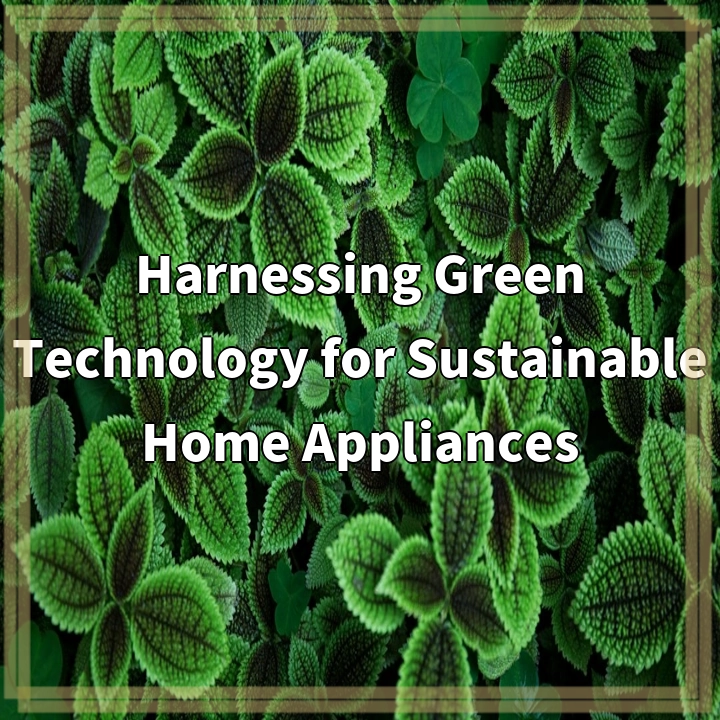
What is Green Technology for Sustainable Home Appliances?
Green technology for sustainable home appliances refers to the use of innovative technologies that are designed to minimize energy consumption, reduce carbon emissions, and promote environmental sustainability in the household sector. These technologies aim to improve the efficiency and environmental performance of appliances such as refrigerators, washing machines, dishwashers, and air conditioners.
Real-world Problems Associated with Green Technology for Sustainable Home Appliances
1. High Initial Costs
One of the significant challenges in adopting green technology for sustainable home appliances is the higher upfront costs compared to traditional appliances. Energy-efficient appliances often come with advanced features and technologies that drive up manufacturing costs. This can be a barrier for many consumers who may prioritize low purchase prices over long-term energy savings.
2. Limited Availability
Another issue is the limited availability and accessibility of green technology appliances. Energy-efficient models may not be as readily available in certain regions or markets, making it challenging for consumers to make sustainable choices. This can be particularly problematic in areas with limited retail options or where energy efficiency is not incentivized or promoted by regulations.
3. Lack of Awareness and Information
Many consumers are unaware of the benefits and potential cost savings associated with green technology appliances. This lack of awareness can prevent them from investing in energy-efficient options. There is a need for increased educational efforts and effective marketing campaigns to inform consumers about the advantages of these appliances and the positive impact they can have on the environment and their utility bills.
4. Recycling and Disposal
Proper disposal and recycling of old appliances pose a challenge in the adoption of green technology. When replacing older appliances with more energy-efficient models, it is essential to ensure the proper disposal or recycling of the old appliances. This includes the safe removal of hazardous materials and the recycling or recovery of valuable components and materials.
5. Consumer Behaviour and Product Lifespan
Consumer behavior can also impact the effectiveness of green technology appliances. Even with energy-efficient models, if consumers do not use the appliances efficiently or maintain them properly, the environmental benefits may not be fully realized. Additionally, shorter product lifespans can counteract some of the energy-saving advantages, as frequent replacements can have a negative environmental impact.
Addressing these real-world problems is crucial for the widespread adoption of green technology in home appliances. Collaborative efforts from manufacturers, policymakers, and consumers are necessary to overcome these challenges and create a more sustainable future.

Solutions to the Challenges of Green Technology for Sustainable Home Appliances
1. Government Incentives and Financial Support
Government bodies can offer incentives such as tax credits, subsidies, and rebates to encourage consumers to invest in green technology appliances. This can help offset the higher initial costs and make sustainable options more economically viable.
2. Increased Availability and Accessibility
Manufacturers and retailers can work towards improving the availability and accessibility of energy-efficient appliances. This can include expanding distribution networks, collaborating with local retailers, and raising awareness among distributors and suppliers about the demand for green technology appliances.
3. Education and Awareness Campaigns
Efforts should be made to educate consumers about the benefits of green technology appliances and the long-term cost savings they can provide. Governments, non-profit organizations, and manufacturers can collaborate on effective marketing and educational campaigns to raise awareness and provide information about sustainable appliance choices.
4. Recycling and Extended Producer Responsibility
Manufacturers should take responsibility for the end-of-life management of their appliances. They can establish recycling programs, offer incentives for returning old appliances, and design products with easier disassembly and recycling in mind. Extended Producer Responsibility (EPR) programs can also be implemented, holding manufacturers accountable for the disposal and recycling of their products.
5. Consumer Education and Training
Consumer education programs can be developed to promote proper usage and maintenance of green technology appliances. This can include providing user manuals with energy-saving tips, organizing workshops to educate consumers about efficient appliance usage, and incorporating energy-saving features and reminders into appliance designs.
By implementing these solutions, we can encourage the widespread adoption of green technology for sustainable home appliances, leading to reduced energy consumption, lower carbon emissions, and a more environmentally friendly future.















